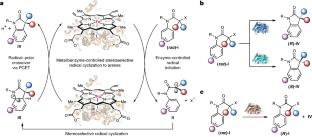2023-07-20 リンショーピング大学
◆Wntシグナリングは胚の発育やがんに重要な役割を果たしていることが知られており、細胞間のコミュニケーションに関連する新しい現象を明らかにしました。この研究は、将来的にがん細胞への治療法の開発に役立ち、さまざまな状況で信号が対象とする遺伝子を正確に特定する基盤を築く可能性があります。
<関連情報>
- https://liu.se/en/news-item/discovery-reveals-how-cells-respond-to-each-other
- https://www.cell.com/cell-systems/fulltext/S2405-4712(23)00157-6
WNT/β-カテニンシグナル伝達の時間分解されたゲノムへの影響 The Time-Resolved Genomic Impact of WNT/ β-Catenin Signaling
Pierfrancesco Pagella,Simon Söderholm,Anna Nordin,Gianluca Zambanini,Valeria Ghezzi,Amaia Jauregi-Miguel,Claudio Cantù
Cell Systems Published:JULY 19, 202
DOI:https://doi.org/10.1016/j.cels.2023.06.004

Highlights
•Time-resolved CUT&RUN, ATAC-seq, and RNA-seq in Wnt-responding HEK293T and hESCs
•β-Catenin targets are time and cell specific
•β-Catenin binding is associated with both activation and repression of target genes
•Wnt/β-catenin activation induces elastic or plastic chromatin responses
Summary
Wnt signaling orchestrates gene expression via its effector, β-catenin. However, it is unknown whether β-catenin binds its target genomic regions simultaneously and how this impacts chromatin dynamics to modulate cell behavior. Using a combination of time-resolved CUT&RUN against β-catenin, ATAC-seq, and perturbation assays in different cell types, we show that Wnt/β-catenin physical targets are tissue-specific, β-catenin “moves” on different loci over time, and its association to DNA accompanies changing chromatin accessibility landscapes that determine cell behavior. In particular, Wnt/β-catenin progressively shapes the chromatin of human embryonic stem cells (hESCs) as they undergo mesodermal differentiation, a behavior that we define as “plastic.” In HEK293T cells, on the other hand, Wnt/β-catenin drives a transient chromatin opening, followed by re-establishment of the pre-stimulation state, a response that we define as “elastic.” Future experiments shall assess whether other cell communication mechanisms, in addition to Wnt signaling, are ruled by time, cellular idiosyncrasies, and chromatin constraints.


